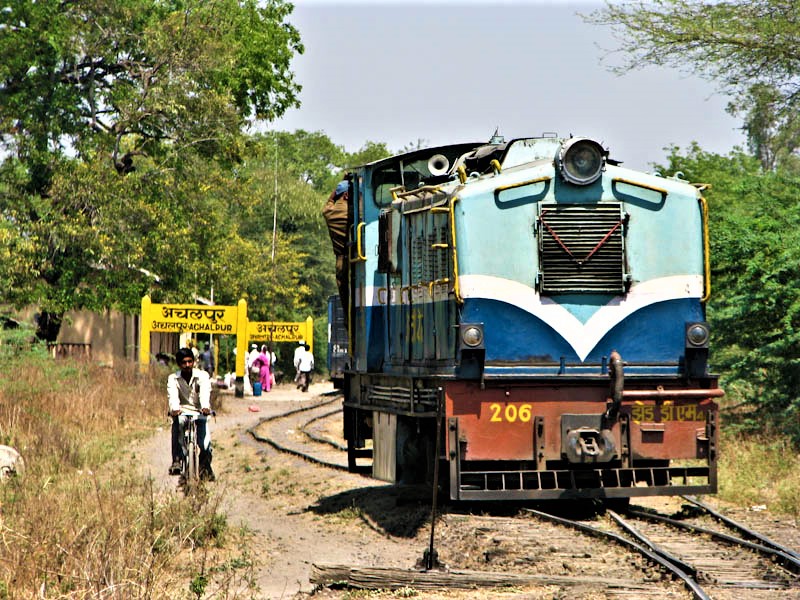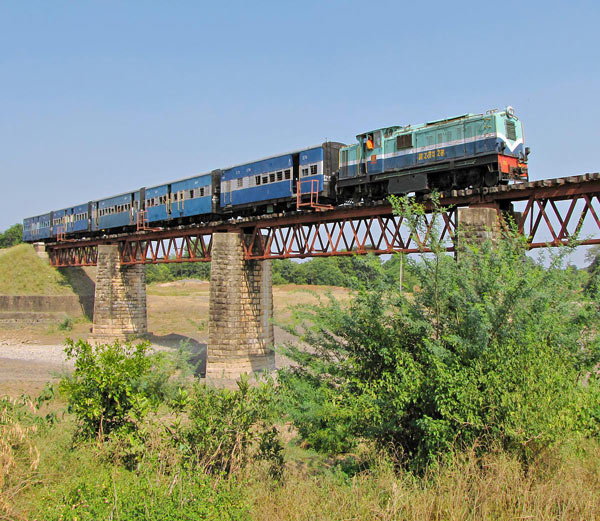The Little Known Story of Shakuntala Railways, India’s Only Privately Owned Railway Line
One of the last vestiges of the colonial era railways, Shakuntala Express runs on India’s only private railway line between Murtazapur and Yavatmal in Maharashtra, chugging along the 190 km stretch at an average speed of 20 km per hour.

Most Indians know of only one Shakuntala, the one Kalidasa made famous in his Sanskrit play ‘Abhijnana Shakuntalam‘. They have not heard of Shakuntala Railways, the only railway in India that is still not owned by the Indian government. The reason as to why this railway line does not come under the Indian Railways is still unclear, but when the entire railways was nationalised in 1952, this line was strangely left alone.

Photo Source
At a time when Indian Railways is making plans to introduce high speed bullet trains in the country, Shakuntala Express, one of the last vestiges of the colonial era railways, continues to enthrall train lovers around the world. The antique train runs on India’s only private railway line between Achalpur and Yavatmal in Maharashtra, chugging along the 190 km stretch at an average speed of 20 km per hour.
Here is the fascinating story of the iconic Shakuntala Railways, the last piece of colonial railway legacy in India.

Photo Source
The Shakuntala Express, a romantic name by all accounts, is a train not many in the country are aware of. But, in Yavatmal and Achalpur (Amravati district) in Maharashtra, it is the lifeline for poor villagers.
It was an era of private railroad companies in 1910 when Shakuntala Railways was founded by a British firm called Killick-Nixon. The private firm floated the Central Province Railway Company (CPRC), a joint venture with the colonial British government in India, for laying railway tracks to be used for transporting cotton from Vidarbha, and finally to Manchester in England. The track had trains running on it by 1916 and soon it was being used to ferry passengers too.
The trains on this track were run by Great Indian Peninsular Railway (GIPR) which operated in Central India. This practice continued even after the GIPR became a part of Indian Railways post independence. Shakuntala Railway is still owned by CPRC, presumably because the government of the day simply forgot to nationalise it, and CRPC is still owned by Killick-Nixon, a British firm. Even though Killick-Nixon has since moved from British to Indian hands, it still leaves us with a privately run train running on Indian tracks!

Photo Source
A ZD-steam engine, built in 1921 in Manchester, pulled the train for more than 70 long years after being put in service in 1923. It was withdrawn on April 15, 1994, and replaced by a diesel engine that now pulls the carriages. Old-time passengers recall how during the steam engine days, the train used to stop virtually anywhere where passengers hailed it.
Today, the track falls under the Bhusawal division of the Central Railways (of the Indian Railways) but CRPC still owns the Murtazapur – Yavatmal (113 km) and the Murtazapur – Achalpur (76 km) railway tracks. Central Railway which runs the trains on the two sections is supposed to pay royalty to its private partner and CPRC, which owns the lines is contracted to maintain them. This contract has been renewed six times since Independence – every 10 years, railways have a chance to exercise the option of taking over the line.
Interestingly, the trains running on these tracks are the only ones in the country where the guards double up as ticket clerks, as there are no railway staff at most of the stations on the two routes!

Photo Source
Unlike most railway lines in India that uses broad gauge lines, the Shakuntala Railways still use narrow gauge lines and makes just one return journey every day. At present, the train takes around 20 hours to cover the 190km distance between Yavatmal and Achalpur in Amravati district.
According to the locals, while a bus from Murtazapur to Yavatmal takes just a few hours, it costs ₹ 150, which is six times the train fare. The trains, therefore, have become a lifeline for poor people residing in the villages between Yavatmal, Murtazapur and Achalpur.

Photo Source
Recently, Union Railway Minister Suresh Prabhu has sanctioned 1,500 crore for converting the narrow gauge Yavatmal-Murtizapur-Achalpur railway line into broad gauge. So, Shakuntala Express is likely to run on the broad gauge line in the near future.
Meanwhile, back in Yavatmal, a scene that is reminiscent of another era can still be seen. As the Shakuntala Express prepares to leave the station, ‘made in Liverpool’ still inscribed on it, a caravan of villagers board the train for Murtazapur. A journey into a piece of history!
You May Like: Konkan Railway: An Incredible yet Little Known Indian Success Story
Like this story? Have something to share? Email: contact@thebetterindia.
NEW! Log into www.gettbi.com to get positive news on Whatsapp.
If you found our stories insightful, informative, or even just enjoyable, we invite you to consider making a voluntary payment to support the work we do at The Better India. Your contribution helps us continue producing quality content that educates, inspires, and drives positive change.
Choose one of the payment options below for your contribution-
By paying for the stories you value, you directly contribute to sustaining our efforts focused on making a difference in the world. Together, let’s ensure that impactful stories continue to be told and shared, enriching lives and communities alike.
Thank you for your support. Here are some frequently asked questions you might find helpful to know why you are contributing?


This story made me
-
97
-
121
-
89
-
167











